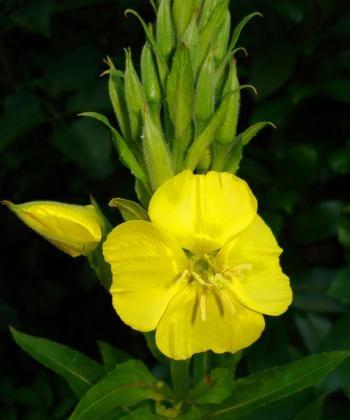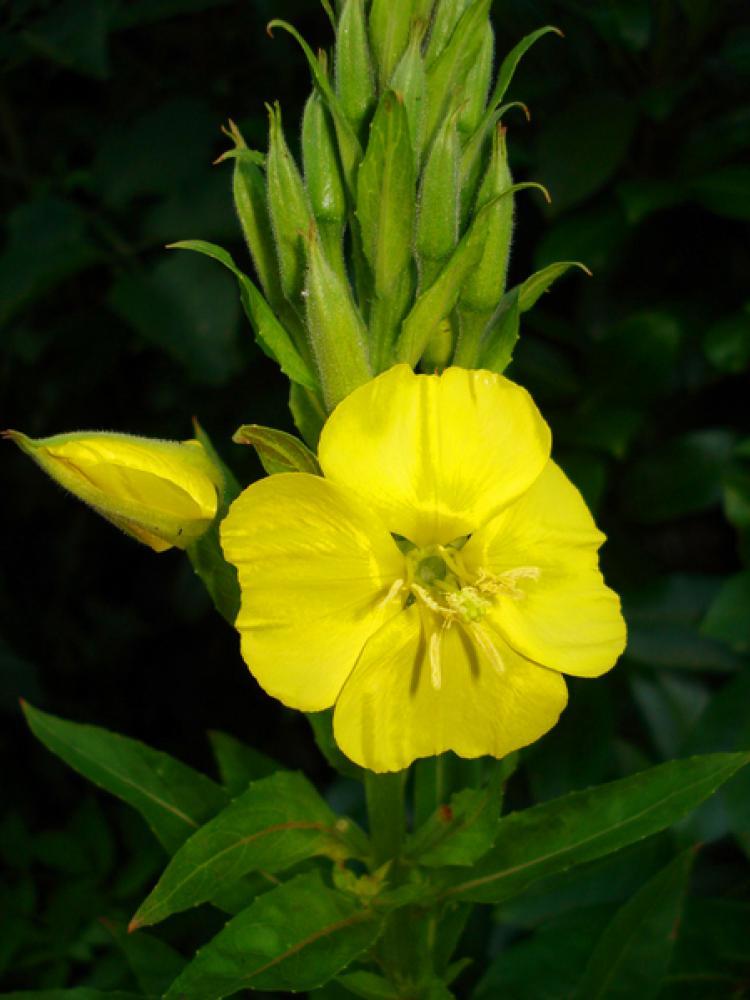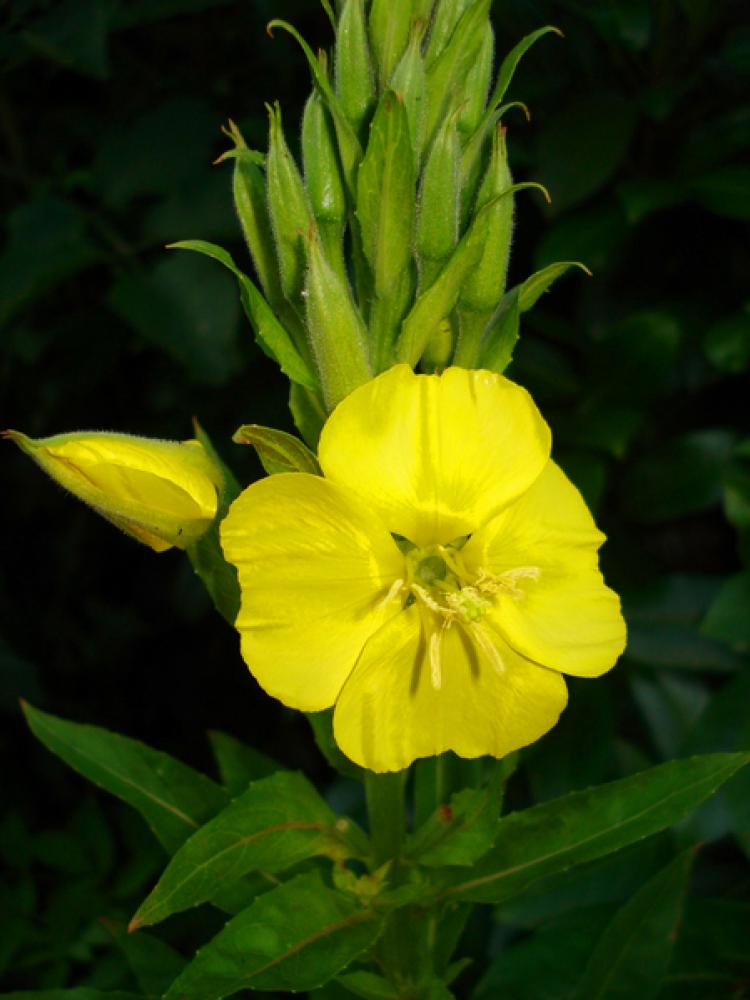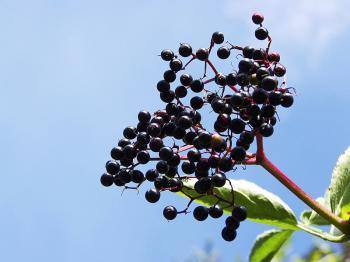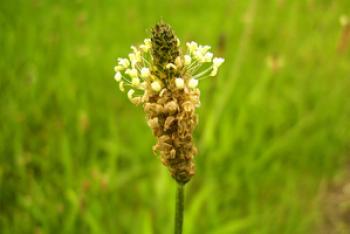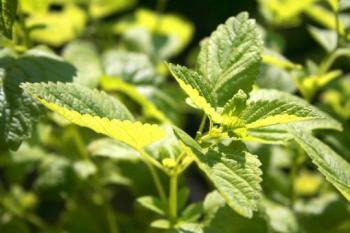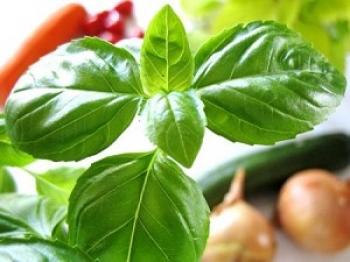The evening primrose plant is native to North America and came to Europe at the beginning of the 17th century. In the 19th century, farm gardeners grew the plant as a beloved vegetable. It did not require complicated soil, nor did it need much tending. Nowadays the plant grows wild along railroad tracks, along countryside foot paths and everywhere else where the soil is poor and sandy. Sprouts, leaves, blossoms and roots are tasty and can be consumed fresh or steamed.
Evening primrose is a perennial and develops merely a leaf rosette during its first year. Some of these leaves, when harvested carefully, can be used for a salad. The plant will continue to grow. Only during the second year does the plant develop the energy to develop its meter-high (almost 4 feet) flowering stem. The glowing yellow blossoms emerge at dusk, from June through October [Translator’s note: the one in my garden in the Pacific Northwest of the USA opens the blossoms in the morning]. It’s very dramatic and only takes mere seconds to unfold. Where I live, in Germany’s Wasgau, the drama unfolds around 9:00 p.m. - the blossoms unfold like the opening of a tightly rolled umbrella, as soon as the protective green husks are set free. The blooms release their fragrance and coincide with the emergence of the night butterflies that can then pollinate them. The show is short-lived: from the initial blooming to the blossom’s demise takes less than 24 hours.
One can cook the unripened fruit that do not yet contain a seed capsule. When ripe, come fall, each blossom produces a seed capsule. Each capsule contains approximately 200 tiny, square-ish dark brown seeds. They are so light and dry that it difficult to imagine that they contain a valuable oil. The content of about 5,000 seeds capsules is required to produce a single capsule containing 500 mg of this valuable evening primrose oil. This precious oil has the reputation to aid in the treatment of stomach and intestinal ailments, skin diseases, heart-and-circulatory and arterial problems.
The oil’s healing substances are linoleic and gamma-linoleic acids, the plant’s essential oils. They are substances our bodies need but cannot produce themselves; we have to ingest them in sufficient quantities [to remain healthy]. Symptoms of insufficient linoleic and gamma-linoleic acids include: dry, scaly skin and diminished tear production. This means that even healthy skin could benefit from evening primrose oil, thus delaying premature aging of the skin, a so-called built-in anti-wrinkle feature.
As a healthful dietary aid, it is recommended to harvest the ripe seeds in the fall. This is simple: carefully cut the dried stems with a pair of scissors. Hold the stems upside down into a simple paper funnel. The seeds have a nut-like flavor and are a great addition to salads or muessli [Translator’s note - muessli is an original Swiss breakfast food made from uncooked oatmeal and fruit, mixed with yogurt and honey and a bit of lemon juice].
Seeds that have hit the ground will sprout in the coming spring, and grow into the characteristic red-green leaf rosette that can once again be used as a salad ingredient.
Evening primrose is a perennial and develops merely a leaf rosette during its first year. Some of these leaves, when harvested carefully, can be used for a salad. The plant will continue to grow. Only during the second year does the plant develop the energy to develop its meter-high (almost 4 feet) flowering stem. The glowing yellow blossoms emerge at dusk, from June through October [Translator’s note: the one in my garden in the Pacific Northwest of the USA opens the blossoms in the morning]. It’s very dramatic and only takes mere seconds to unfold. Where I live, in Germany’s Wasgau, the drama unfolds around 9:00 p.m. - the blossoms unfold like the opening of a tightly rolled umbrella, as soon as the protective green husks are set free. The blooms release their fragrance and coincide with the emergence of the night butterflies that can then pollinate them. The show is short-lived: from the initial blooming to the blossom’s demise takes less than 24 hours.
One can cook the unripened fruit that do not yet contain a seed capsule. When ripe, come fall, each blossom produces a seed capsule. Each capsule contains approximately 200 tiny, square-ish dark brown seeds. They are so light and dry that it difficult to imagine that they contain a valuable oil. The content of about 5,000 seeds capsules is required to produce a single capsule containing 500 mg of this valuable evening primrose oil. This precious oil has the reputation to aid in the treatment of stomach and intestinal ailments, skin diseases, heart-and-circulatory and arterial problems.
The oil’s healing substances are linoleic and gamma-linoleic acids, the plant’s essential oils. They are substances our bodies need but cannot produce themselves; we have to ingest them in sufficient quantities [to remain healthy]. Symptoms of insufficient linoleic and gamma-linoleic acids include: dry, scaly skin and diminished tear production. This means that even healthy skin could benefit from evening primrose oil, thus delaying premature aging of the skin, a so-called built-in anti-wrinkle feature.
As a healthful dietary aid, it is recommended to harvest the ripe seeds in the fall. This is simple: carefully cut the dried stems with a pair of scissors. Hold the stems upside down into a simple paper funnel. The seeds have a nut-like flavor and are a great addition to salads or muessli [Translator’s note - muessli is an original Swiss breakfast food made from uncooked oatmeal and fruit, mixed with yogurt and honey and a bit of lemon juice].
Seeds that have hit the ground will sprout in the coming spring, and grow into the characteristic red-green leaf rosette that can once again be used as a salad ingredient.

